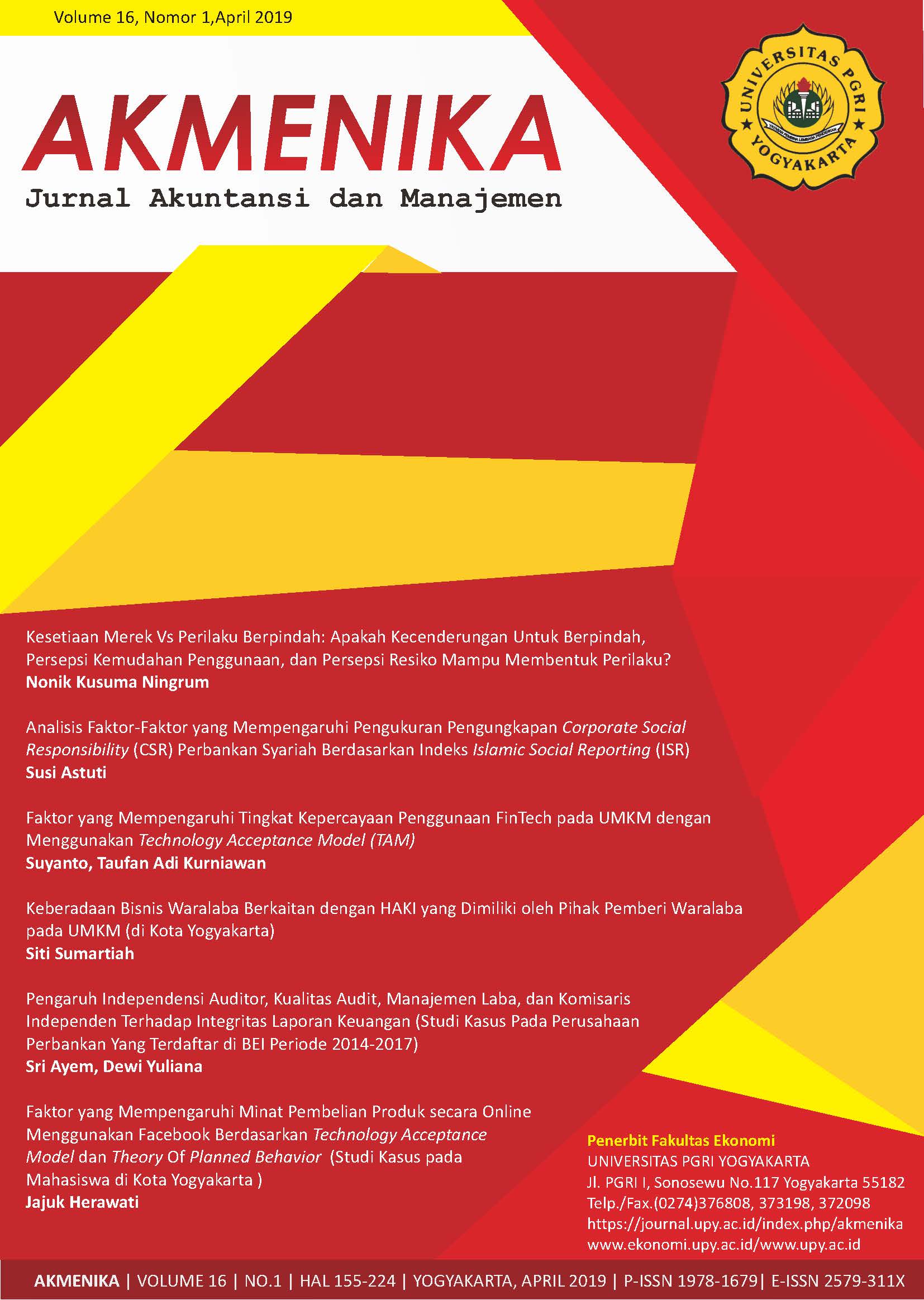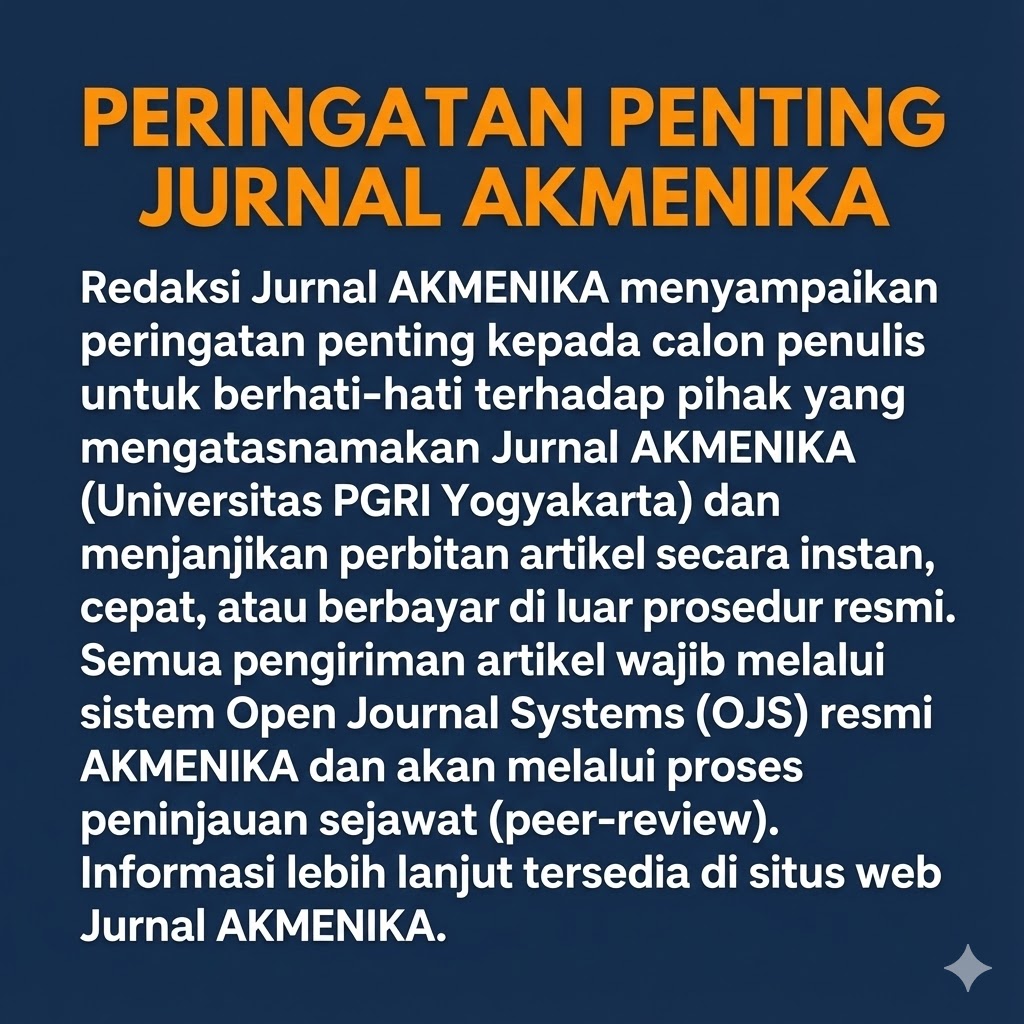Kesetiaan Merek Vs Perilaku Berpindah: Apakah Kecenderungan Untuk Berpindah, Persepsi Kemudahan Penggunaan, Dan Persepsi Resiko Mampu Membentuk Perilaku?
DOI:
https://doi.org/10.31316/akmenika.v16i1.164Abstract
Abstract
Purpose - This study is aimed to examine the effect of propensity to switch, perceived ease of use, and perceived risk on brand loyalty and switching behavior.
Design/methodology/approach - Utilizing purposive random sampling, a number of 100 customers of 36 brands of 12 product categories were asked to fill in the questionnaire as primary survey data. To analyze the measurement model, structural model, and the good fit model, this study made use of the structural equation model.
Findings - Propensity to switch significantly positive affects brand loyalty and switching behavior; whereas perceived of ease of use significantly positive affects brand loyalty and significantly negative affects switching behavior; and perceived risk significantly negative affects brand loyalty and significantly positive affects switching behavior
Research limitation - A more numbers of respondents and more variations of respondents’ background should be considered for future study. A propensity to be a loyal customer variable should also be added in the model.
Originality/value - This study takes a look at two different points of views of customer behaviors, those are customers who remain to stay with one brand and those are who always seek for something new and keep switching.
Downloads
Published
Issue
Section
License
License and Copyright Agreement
In submitting the manuscript to the journal, the authors certify that:
- They are authorized by their co-authors to enter into these arrangements.
- The work described has not been formally published before, except in the form of an abstract or as part of a published lecture, review, thesis, or overlay journal.Â
- That it is not under consideration for publication elsewhere.
- That its publication has been approved by all the author(s) and by the responsible authorities – tacitly or explicitly – of the institutes where the work has been carried out.
- They secure the right to reproduce any material that has already been published or copyrighted elsewhere.
- They agree to the following license and copyright agreement.





.png)
.png)
.png)
1.png)
.png)
.png)
.png)







